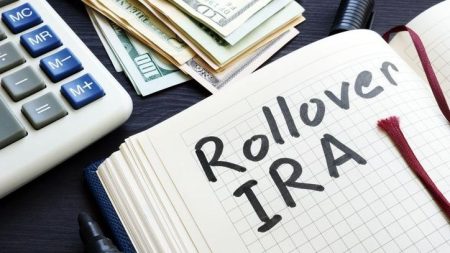For an average single person planning to stop working at 64, a $1.2 million 401(k) account and $2,800 Social Security benefit could provide enough income to make ends meet during retirement. Widely used guidelines suggest your annual income may be around $81,600, which may or may not be more than your annual expenses. Much depends on individual circumstances, including the kind of retirement lifestyle you desire, your location and future trends of inflation, taxes and investment returns. To get a comprehensive workup of your retirement budget, take the question to a financial advisor.
Retirement Budget Basics
Income and expenses represent the two sides of your retirement budget. Both are equally important and decisions you make regarding either can affect the overall accuracy and dependability of the budget.
You can estimate expenses by using averages for typical retirees or by considering specifics of your situation with estimate for categories such as housing, healthcare and taxes. Similarly, you can estimate future income with general guidelines or by accounting for specifics such as your personal investment preferences.
Your Retirement Income
In your case, we’ll start with income since we have information about that. Despite the possibility that Social Security benefits will be cut by about 20% after 2035, your $2,800 Social Security benefit can probably be relied upon. And benefits are indexed to a cost-of-living benchmark, providing protection against inflation.
Note, however, that if you wait to claim benefits, your monthly amount will increase every year until you are 70. By claiming at age 64 rather than waiting until your full retirement age of 67, you are receiving 20% less. If you wait until age 70, you’ll get 24% more than at 67. And you’ll receive the higher amount, adjusted annually for cost of living, as long as you live.
Next, let’s look at the income from your $1.2 million 401(k). One common approach uses the 4% guideline. This rule of thumb withdraws 4% of the retirement account balance the first year, increasing that amount annually by the inflation rate. In your case, this indicates you’d withdraw $48,000 the first year of retirement.
Adding your $33,600 Social Security benefit to your $48,000 withdrawal gives you $81,600 in income. Actual income may vary if you are a more or less conservative investor, experience market volatility or encounter other potential disruptions. It also doesn’t account for taxes or investment fees. Overall, it’s a reasonable forecast and useful for planning, but it’s wise to be flexible and not assume you’ll have precisely this much every year.
Your Retirement Expenses
Using the 70% figure and assuming your pre-retirement income is $65,000, which is approximately the median salary reported by the Bureau of Labor Statistics for earners in your age group, annual expenses might be $65,000. That’s $16,600 less than your estimated income, suggesting your retirement budget may have ample cushion. However, there are other factors to consider, including:
- Personal goals. You probably aren’t exactly average, and your individual lifestyle preferences will impact your expenses. For instance, if you like to take $5,000 luxury cruises every year, that will consume a lot of your cushion.
- Location. Where you choose to retire also matters a lot. For example, if you live in San Francisco, where the cost of living is 84% higher than the U.S. average, your annual expenses could be $45,500 times 1.84 or $83,720, putting you in a budget deficit.
- Housing. The largest single retiree expense is housing, including rent, mortgage, property taxes, utilities, maintenance and other shelter-relate costs. Again, location is a key factor. For example, the 2023 Bureau of Economic Analysis report on regional price parities set California’s housing rents at 160.2 on the national index while in West Virginia rents were just 53.9.
- Inflation. Broad price increases erode your purchasing power and may also affect investment return. While it’s difficult to accurately forecast future inflation, you can likely expect costs to rise faster in places that already have a high cost of living, which is another reason to consider a low-cost location for your retirement.
- Health and long-term care costs. You’ll be eligible for Medicare at 65, so you only need to budget for private health insurance premiums for a year. After that, however, your healthcare costs in retirement can still be significant. You may also want to consider how you’ll pay for long-term care should that become necessary. Average annual premiums for long-term care insurance for a 65-year-old male are approximately $1,175.
- Taxes. Taxes normally decline in retirement but won’t completely disappear. In your first year of retirement subtracting the 2024 standard deduction of $14,600 for a single filer under 65 from your $48,000 in retirement withdrawals indicates taxable income on those withdrawals of $33,400. Adding half of your $33,600 in Social Security benefits, or $16,800, produces combined income of $50,200. At that income level, 85% or $28,560 of your Social Security benefits will be taxable. Your total taxable income comes to $33,400 plus $28,560 or $61,960. For the 2023 tax year, this would put you in the 22% marginal income tax bracket and result in a $5,892 federal tax bill. Future tax rates will be different, and you may also owe state taxes.
- Required Minimum Distributions (RMDs). You start taking RMDs when you reach 73. By then, assuming you voluntarily withdraw a level $48,000 each year from your 401(k) and earn an average 7% each year on the remaining balance, your 401(k) will contain $1,626,606. According to IRS tables, your first-year RMD will be $61,381. Depending on the future direction of inflation, that may be more than you are withdrawing if you are using the 4% guideline. Since RMDs are taxable just like voluntary withdrawals, this could affect the taxes you’ll owe.
Bottom Line
A realistic retirement budget for a typical retiree using conventional guidelines might use $81,600 for an income figure in your case, and $45,500 in expenses. However, your own budget could be quite different depending on your investment style and risk tolerance and preference for a more or less costly lifestyle. Location, healthcare costs and the future of Social Security are just some of the other uncertainties involved in crafting a retirement budget, so it’s wise to build in a substantial cushion.
Tips
- If you want to put together a realistic retirement budget, consider working with a financial advisor. Finding a financial advisor doesn’t have to be hard. SmartAsset’s free tool matches you with up to three financial advisors in your area, and you can interview your advisor matches at no cost to decide which one is right for you. If you’re ready to find an advisor who can help you achieve your financial goals, get started now. You can also read SmartAsset reviews.
- Don’t just guess what your RMDs may be once you reach 75. Use SmartAsset’s RMD Calculator to generate an estimate of your RMD based on official IRS tables.
- Keep an emergency fund on hand in case you run into unexpected expenses. An emergency fund should be liquid — in an account that isn’t at risk of significant fluctuation like the stock market. The tradeoff is that the value of liquid cash can be eroded by inflation. But a high-interest account allows you to earn compound interest. Compare savings accounts from these banks.
Photo credit: ©iStock.com/Luke Chan
Read the full article here
















